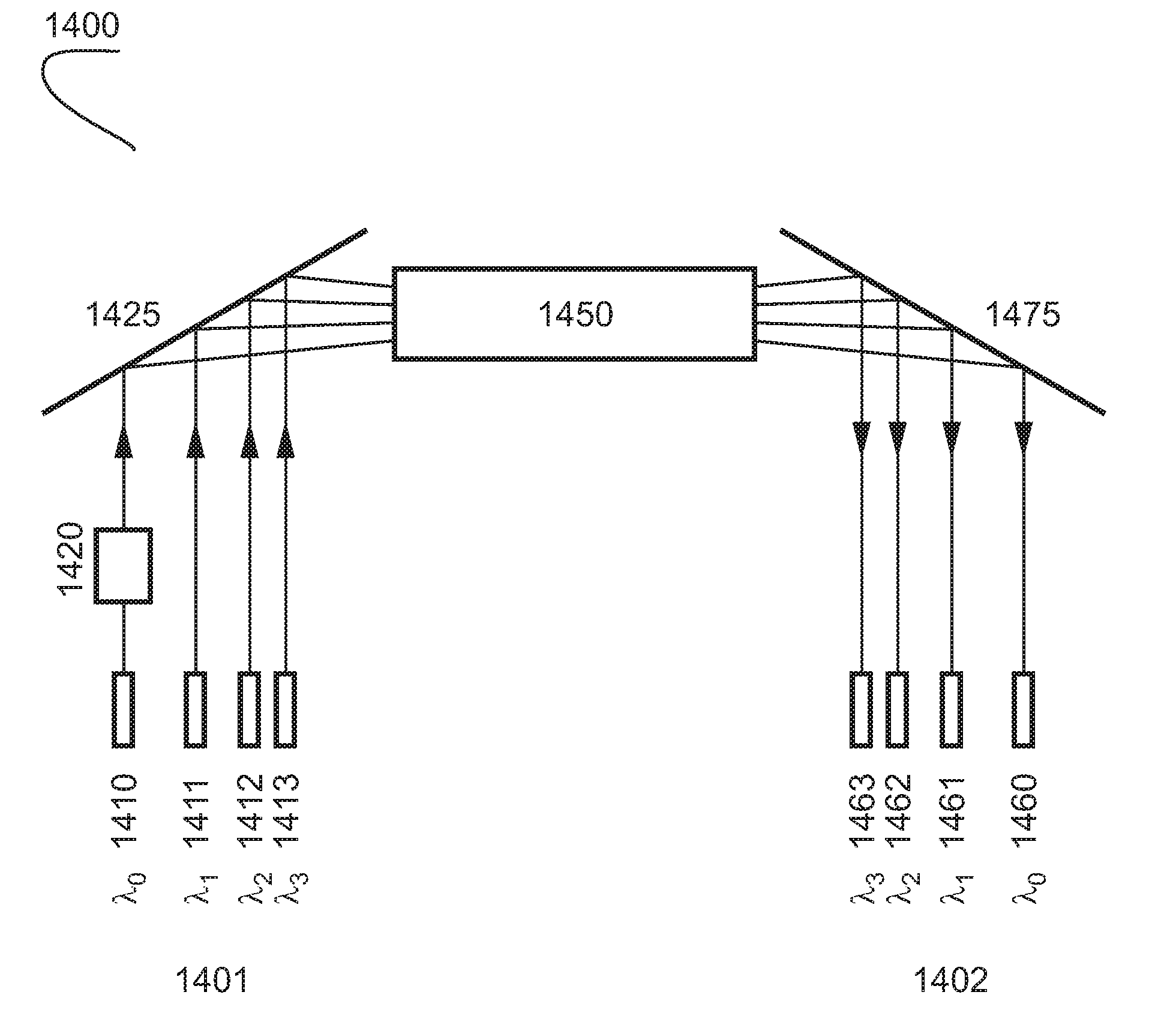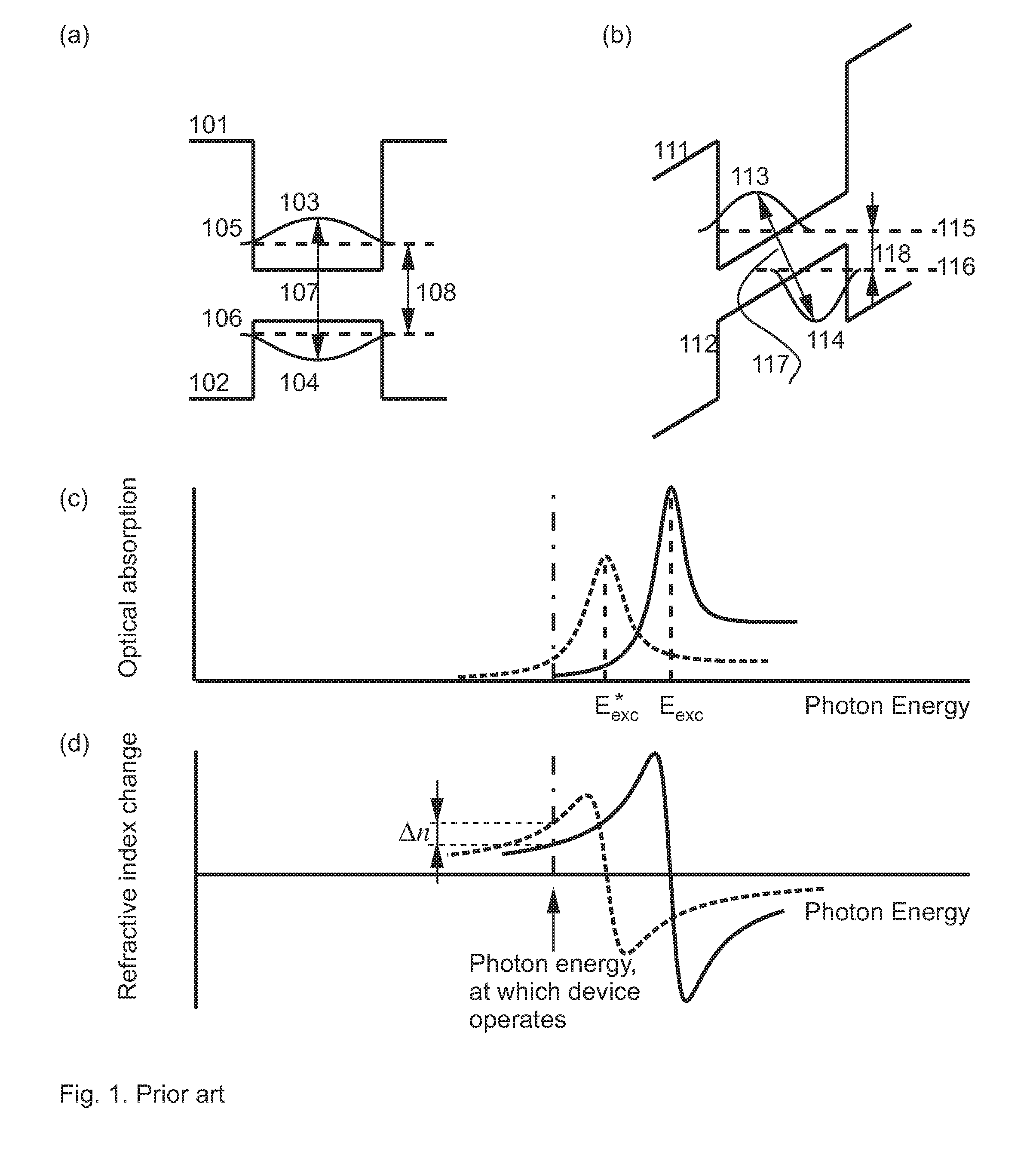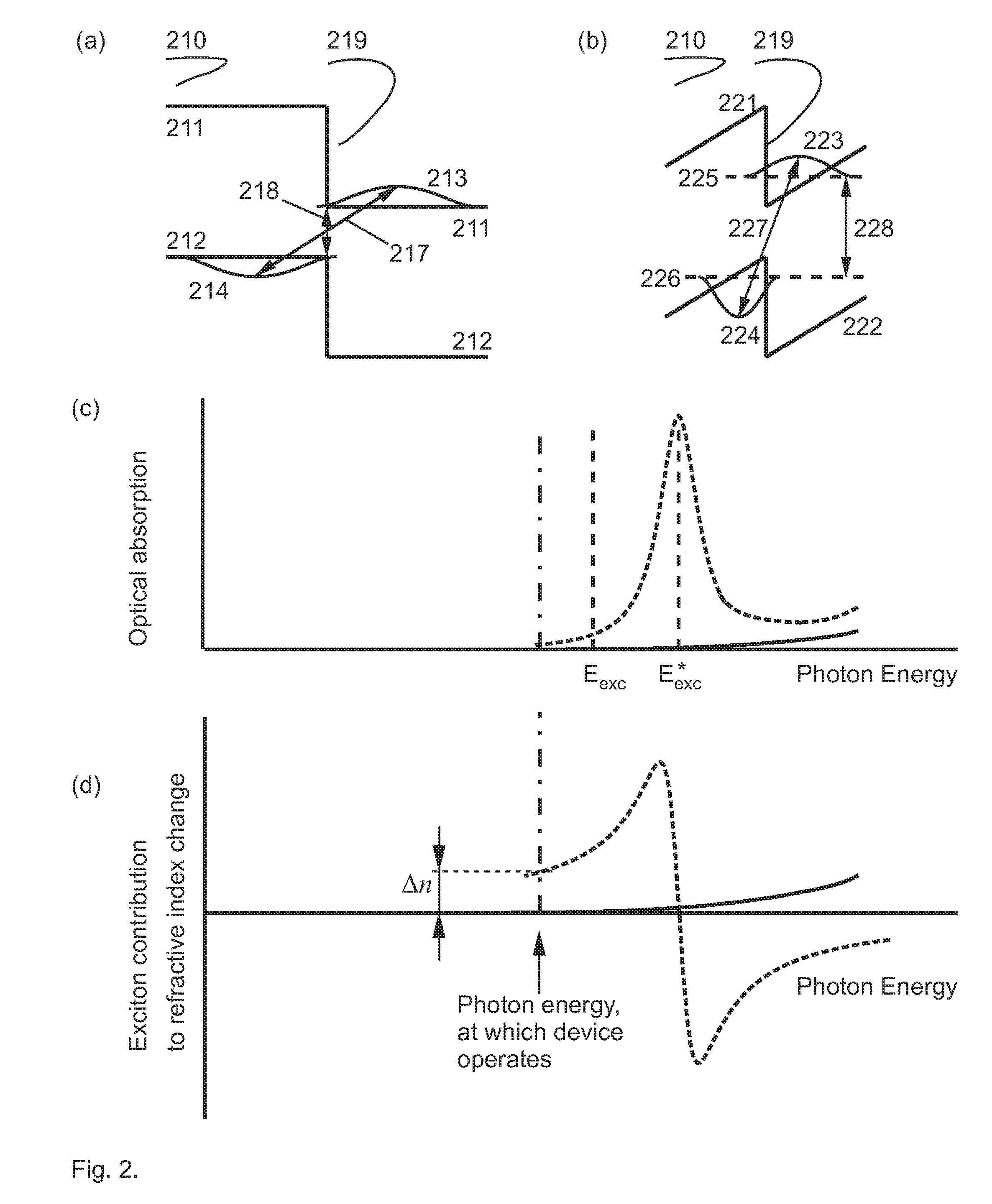Anti Stark Electrooptic Medium and Electrooptically Modulated Optoelectronic Device Based Thereupon
a technology of optoelectronic devices and anti-smooth electrooptic mediums, which is applied in the field of ultra-high-speed optoelectronic devices, can solve the problems of increased absorption at the wavelength and bandgap shrinkage, and achieve the effect of increasing the overlap of electrons and strong increase of exciton oscillator strength
- Summary
- Abstract
- Description
- Claims
- Application Information
AI Technical Summary
Benefits of technology
Problems solved by technology
Method used
Image
Examples
Embodiment Construction
[0071]Electrooptic Medium Based on Anti-Stark Effect
[0072]The present invention provides a novel electrooptic medium that allows to overcome major shortcomings of the conventional medium based on Quantum-confined Stark effect.
[0073]FIG. 2(a) shows schematically a type-II heterojunction (210), showing further the conduction band profile (211) and the valence band profile (212). The electron wave function (213) and the hole wave function (214) are confined separately on the opposite sides from the heterointerface (219). They are only weakly confined at the heterojunction due to the Coulomb interaction. The two wave function are spatially separated which illustrated by a diagonal line (217), and the overlap between the electron and hole wave functions is close to zero. Preferably the overlap between the electron wave function and the hole wave function defined by the overlap integral is below ten per cent. The energy separation between two levels (218) is mainly determined by the separ...
PUM
 Login to View More
Login to View More Abstract
Description
Claims
Application Information
 Login to View More
Login to View More - R&D
- Intellectual Property
- Life Sciences
- Materials
- Tech Scout
- Unparalleled Data Quality
- Higher Quality Content
- 60% Fewer Hallucinations
Browse by: Latest US Patents, China's latest patents, Technical Efficacy Thesaurus, Application Domain, Technology Topic, Popular Technical Reports.
© 2025 PatSnap. All rights reserved.Legal|Privacy policy|Modern Slavery Act Transparency Statement|Sitemap|About US| Contact US: help@patsnap.com



